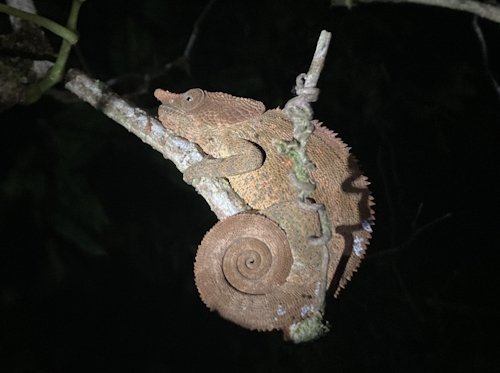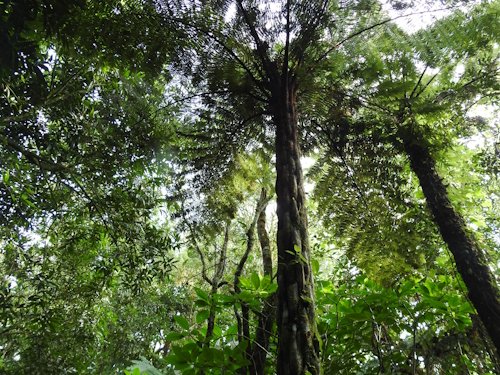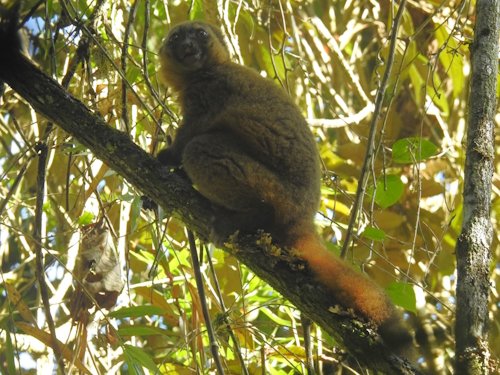Els Slots
WHS #844: Rainforests of the Atsinanana
The Rainforests of the Atsinanana are the quintessential Malagasy WHS, as they comprise the last remaining patches of rainforest in Madagascar and are home to the iconic lemurs (of which 108 species have been discovered). Like the other reviewers before me, I choose to visit Ranomafana NP out of the 13 WH locations, as it is the easiest to reach. After 2 days of driving from the capital via Antsirabe along bare red soil and agricultural terraces, suddenly there they were: forests! Even in the dry season, it often rains here at night. More water is present at the river with a large waterfall next to the access road.

I stayed in Ranomafana village for one night; this way you can do the night walk after arrival and visit the diurnal creatures the next morning. You can allocate more time when you’re interested in a specialized subject like birds – the park has three sections, of which the main one holds most lemurs and the other two have their own qualities.
The night walk nowadays is executed along the road parallel to the park entrance - it is forbidden to enter the park borders after dark due to people getting lost / poaching (I heard both stories). I went with a local guide, for whom this side job was a welcome addition to his income as a banana farmer. He had sharp eyes, especially for chameleons, which became the stars of the walk. We saw many species, some tiny and others of a decent size. They did change colour when we looked more up and close, the trick is to then go quickly to look at it from the other side where the original colours are still present. Pictured above is the Blue-legged chameleon.

Lemurs also come in diurnal and nocturnal species. Our aim for the night was the Brown Mouse Lemur. The guides (there was another one present with a tourist couple in tow) use the help of rubbing banana smell to a tree branch – we saw one quickly, but the spot was used mainly by a rat that scared the lemur away. Later on, at a different place, we got eye-shine from the flashlights. Zooming in with my camera it proved indeed to be the mouse lemur, a small creature looking at us with two round eyes.
Around 7.30 the following morning we started the hike inside the park, after having bought a ticket at the reception (no sign of a WH plaque by the way). The ticket shows the Golden Bamboo Lemur, the flagship species of this park. With the guide (in all Malagasy national parks the use of a local guide is obligatory) we went on our way to see some flora but mostly lemurs of course. A tracker walked ahead to scout for these mammals. The main trail inside the park is fairly easy (a bit up and down) and paved with large stone blocks. Unfortunately, the lemurs usually do not come close to the path, although some of them are known to take the recently renovated bridge across the river in the early morning. The species that Ranomafana is especially known for, the various bamboo lemurs, take their breakfast in a patch of dense bamboo forest. When the tracker has found a lemur, you need to scramble up the hill and across tree trunks to get close enough to see them. The whole experience reminded me of Mgahinga NP TWHS in Uganda, where you go and look for Golden Monkeys in a similar bamboo forest.

Fortunately, lemurs are more relaxed around humans and better resistant to noise than monkeys for example. Guides and tracker just shouted out to each other across the forest. And the lemurs kept nibbling away at their bamboo shoots with 6 photographing tourists underneath their tree. We eventually saw three species over the course of 3.5 hours: the critically endangered Greater Bamboo Lemur (looks like a large teddy bear), the also critically endangered Golden Bamboo Lemur (photo 3), and the less endangered (status: vulnerable) Red-bellied Lemur, which also lives in other parks but is not so commonly seen. These lemur species live as couples or families and are fairly quiet, so they’re not easy to spot by yourself.
More on
Els SlotsComments
No comments yet.
